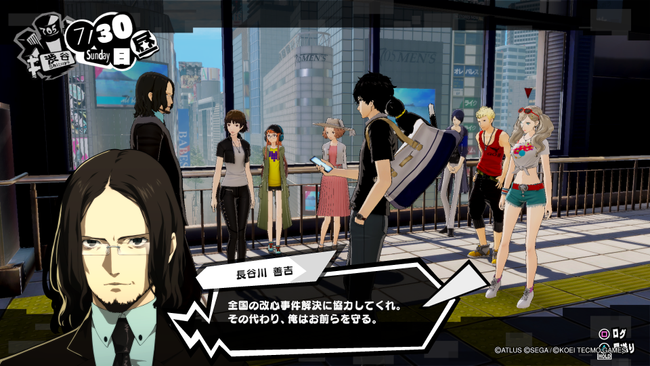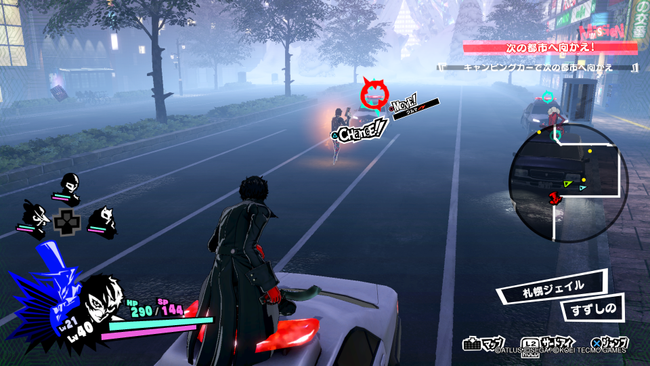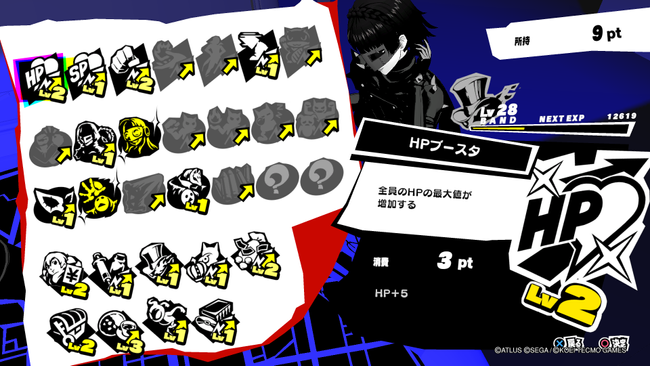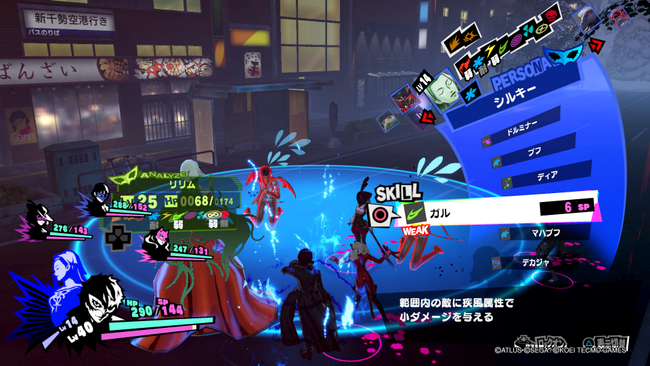Persona 5 Scramble: The Phantom Strikers Import Impressions
I have been a long-time fan of Dynasty Warriors games and have enjoyed many of its iterations, derivatives, and spin-offs. When I bought Persona 5 during a Tokyo Game Show trip in 2017 due to a sheer number of recommendations and later completed a playthrough of the RPG, who knew it going to prepare me for a new musou-style game coming years down the line.
When Atlus announced Persona 5 Scramble: The Phantom Strikers, they revealed that it was being developed by Omega Force, a brand within Koei Tecmo that is well-known for the Dynasty Warriors games. So, for many, the initial expectation was that the game would play just like any of the many other collaboration Warriors games, or perhaps like Dragon Quest Heroes which was also made by the same team.
Even the demo version released in Japan gave the impression that P5S would be mostly focused on the action, where you could just barge in and easily mow down every enemy that shows up. But in reality, the full game is anything but. It’s not really like Dragon Quest Heroes at all, which had a crossover roster and its own original storyline that one could fully enjoy without having previously played any of the mainline Dragon Quest RPGs.

In some of the Japanese promotional trailers, Atlus teased that P5S could also be alternatively named P5-2 as though it works as a direct sequel to Persona 5. And I would say that is pretty much on point. Without spoiling much of the story, it starts not too far away from the ending of the base Persona 5 timeline, and it assumes that you are already familiar with the Phantom Thieves and all the hardships they faced in the base RPG.
This de-facto sequel quickly re-introduces the main cast as it immediately gears up for a new boss-of-the-week arc, like a new season of a TV show. Those who have followed through the base story of Persona 5 may appreciate seeing how each member of the Phantom Thieves has grown from their previous struggles and how it affects their interactions with the newly introduced key characters in Scramble. Meanwhile, those who have not played Persona 5 will likely get lost every time the characters make references to past events that happened in the base storyline.
And if you’re trying to play P5S just like how you would play a standard Warriors game, you’d be in for a very nasty surprise. If you try to attack a patrolling enemy head-on, they will ring the alarm faster than your blade landing on them, and they can launch a preemptive attack that puts your party at a big disadvantage. Ring the alarm too often and you will be eventually forced to leave the map.

The general gameplay feels more like Persona 5, the RPG, where stealth is essential in order to smoothly progress through the maps. Other than striking the enemy from behind, the game also encourages you to hide behind walls or above objects to stage sneak attacks on unsuspecting enemies. The frame rate also differs based on which platform you’re playing at: The Nintendo Switch version is capped at 30 fps (both undocked and docked) that makes it feel closer to the base RPG, while the PlayStation 4 version mostly reaches 60 fps for smoother action gameplay.
The biggest differences here from the base RPG are, of course, the battle system switching from turn-based commands to real-time action and that you can control most of the Phantom Thieves on the field while performing Baton Touch to switch the player character at any time. One interesting thing to note here is that all other playable Phantom Thieves can also use the Third Eye ability to scan for hidden passages and treasures, although only Joker has additional voice lines as the original user.
Most enemy attacks will hit like a truck and you cannot guard to reduce damage, so you will have to cleverly avoid those attacks – although each character also has a Speed stat that determines the probability of automatic evasions. Persona skills also still play a major role in dealing big damage here; some combo attacks let you unleash a Persona’s skill attack without using SP, but the manual skill commands – like in the RPG – will still deal more potent effects.
Persona 5 players may appreciate the fact that battle transitions are totally seamless as they take place in the exact same location… or maybe not, because not all walls can be used for sneaking as the game only registers specific places as hiding spots. If things start going awry when an enemy notices you, P5S also offers a failsafe method by letting you aim your gun – which freezes the time – and shoot the enemy before they can sound that alarm, although this will cause the battle to start at a level playing field.

Other differences that P5S have from P5 – that the RPG players might also find jarring especially if they have not played this style of game before – are the lack of calendar limits and confidants. Unlike Persona 5, The Phantom Strikers is not a school year simulator as it tries to condense the whole story into the summer holiday period in July and August. Those who are familiar with how mainline Persona stories progress may notice how the story’s pacing is quite different as well – especially in the middle parts of the game.
No matter how many times you visit a Jail, the game’s time won’t progress until you reach a specific point in the dungeon. In fact, most parts of past Jails can still be accessed even after the boss has been defeated; this is partly because some of the optional requests will want you to revisit them, so there are fewer missables in general – except for some specific character requests.
The confidants have also been replaced with a Band system that is much more straightforward: simply gather team experience and level by winning battles, and then spend the points to improve battle-related parameters from character stats to drop rates. Combined with the above, this game will really enable you to easily grind levels and farm items without the need to think about daily schedules.
And of course, it’s not a Persona game impression if I don’t mention the soundtrack. The real-world segments see some familiar tracks returning from the base P5 while the new cities where the Phantom Thieves stay in also get new tracks composed by Atlus’ very own Atsushi Kitajoh. But once you enter battles in the Metaverse, you will be greeted with electric guitars that have been prevalent with a majority of games in the Warriors metaseries.
The battle themes from the original Persona 5, such as Last Surprise, have received Musou-rock arrangements done by Koei Tecmo’s composers including Gota Masuoka and MASA of Dynasty Warriors fame. But it’s not just all remixes, as Atlus also throws in new songs that are still sung by Persona 5’s vocalist Lyn. These songs are made in pure collaboration as you can hear both the catchy grooviness from Atlus and the guitar riffs from Koei; they work really well to hype up the fights.

Atlus and Koei Tecmo have made sure that Persona 5 Scramble feels similar to the base Persona 5 RPG, from presentation to interface. Even coming from a Dynasty Warriors fan like myself, I'd still highly suggest those who are interested in Persona 5 Scramble to play Persona 5 first. Not only because of how the story makes many references to the base RPG, but it also helps you treat the gameplay system not as a Musou game with Persona characters, but as a Persona RPG with a Musou action system.
However, story knowledge from just the base Persona 5 would be enough in order to follow P5S’s storyline. While Atlus has also recently released an enhanced edition of P5 with Persona 5 Royal, Scramble does not make any reference to Royal-specific characters or events that were added there. So if you did start with Royal, getting the same ending as the base version would be enough to prepare for Scramble.